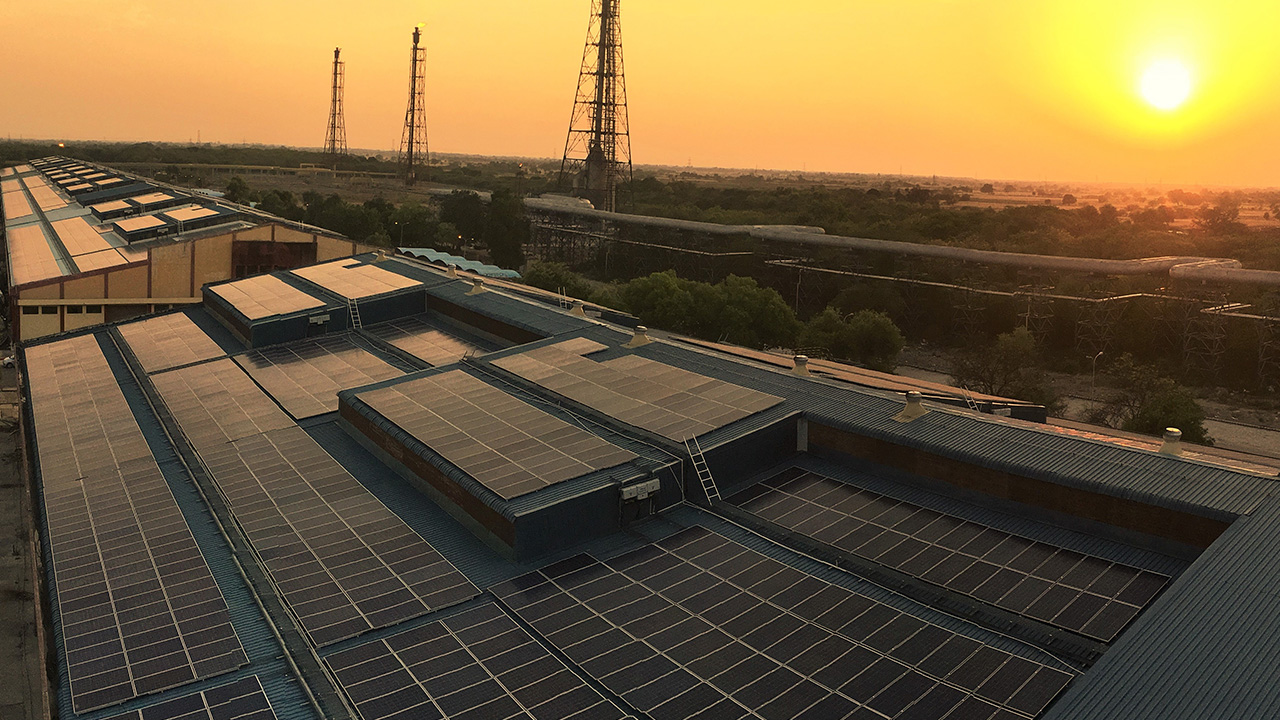Solar sector in India has seen tremendous growth in a short period of time. As we work to scale up our solar PV generation capacity, equal efforts have to be made to ensure the equipment quality of upcoming installations is up to industry standards. The plants must strictly adhere to established norms of engineering, safety and their seamless integration into the national grid. Precise design and engineering of solar power plants in a way that optimises power generation is essential to harness its real benefits.
While designing a solar PV system, it is crucial to have a thorough understanding of parameters that affect power generation comprising both metrological data and electrical components. Solar power plant design calls for high technical proficiency in order to maintain a delicate balance between performance and cost. Various factors such as infrastructure, solar plant layout, technology selection, system configuration, and quality of the components play a very important role in maximising energy yield and minimising project cost.
A key input for a solar PV power plant design is the metrological data of the installation site, which consist of solar irradiance, temperature, relative humidity and wind data. It is critical to consider updated metrological data base and advanced software to predict expected power generation with high precision.
The basic components of a solar power plant include a solar module, inverter electronics, structures and balance of electrical system.
The electrical components are primarily classified into DC side and AC side. DC side covers solar modules, solar cables inverter, and mounting system, while the AC side entails AC cables, electrical protection, transformer and evacuation. Additionally monitoring system (SCADA/data logger/cloud-based system) is used for tracking and predicting power generation, capturing plant performance and O&M.
Solar technology has witnessed innovation at a feverish pace in the last decade, thereby progressively improving solar module efficiency and sizes. Modules are now available at higher power wattage and higher voltage. With this incremental system voltage, it is possible to reduce the solar field losses up to some extent which ultimately increases the plant performance ratio (PR). Modules being at the core of power generation must be selected with meticulous evaluation of all relevant parameters. It should be safe for the user, O&M team and the system. Alongside, it must necessarily address UV rays and other environmental related conditions.
Inverters should be of good quality, with high conversion efficiency, and proven reference base that has good online and offline service support across the country. The replacement parts should be easily available. The inverter should have adequate protection features on both DC and AC side along with flexibility in design. Adaptability to environmental conditions of the solar field is a very critical factor too.
Other components should be selected as per site condition and project requirement. Importantly, valid and applicable certifications should be available for all components to meet necessary quality standards. Certifications are also required for government approval, insurance claim and safe operation of the plant.
An optimally designed plant should have average first year PR between 78% to 82% depending on various aforesaid parameters, losses and proper O&M. To optimise for maximum generation we need to take into consideration various loss parameters mentioned below :
| Sr. no | Loss Parameter | Typical Values (in %) |
| 1 | Shading | Not greater than 3.5% |
| 2 | Incidence Angle Modifier | Not greater than 3.5% |
| 3 | Soiling Loss | Not greater than 3.5% |
| 4 | Module Temperature Loss | Approximately 11-12% |
| 5 | Module Quality Loss | Typically this ranges from 0 to 3% |
| 6 | First Year Module Degradation (under Light Induced Degradation (LID) |
LID – Typically this ranges from 0 to 3%
Annual Degradation – Typically this ranges from 0.5% to 0.75% |
| 7 | Module Array Mismatch Loss | Typically 1.2% |
| 8 | DC Ohmic Wiring Loss | Not more than 3.5% |
| 9 | Inverter Loss during Operation (Efficiency) | Typically 2.5% |
| 10 | AC Ohmic Losses | Not more than 3.5% |
| 11 | System Unavailability | Typically 1% |
| 12 | External Transformer Loss | Typically 3% |
Solar PV installations are often perceived to be relatively simple. But sans proper design, installation and regular maintenance, not only does the desired power generation suffer, but safety of the electrical system could also be compromised leading to fatalities. Hence, due care and attention are to be extended to all facets of a solar plant.
While most of the solar players and media continue to focus on the cost of solar, a prudent customer needs to look at the performance track record while choosing the EPC partner for their solar project. Since a solar power plant has an expected life of 25 years or more, degradation of performance over time has an outsized impact on overall returns to the customer.
Thermax has installed more than 130 solar PV plants spread over 70 cities across 18 states. It is a testimony to our engineering capability and rigorous focus on quality that all our installations continue to operate above-committed performance ratio. We have managed to reach PR as high as 85%-86% for some installations with an intelligent combination of site conditions and technical innovation. Combined with our O&M support, customers can be rest assured that their plant will continue to generate green solar power for its useful life and beyond.
To know more about our solar offerings, connect with us at https://www.thermaxglobal.com/solar-offering/
To enquire: enquiry@thermaxglobal.com
To call: 1800-209-0115




